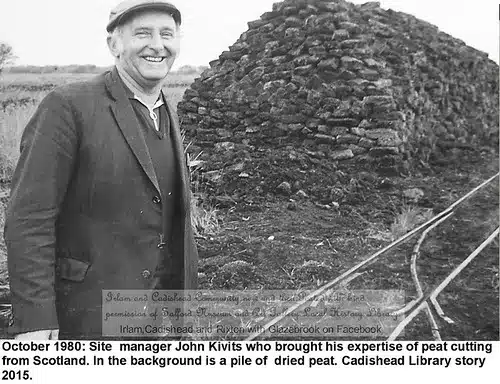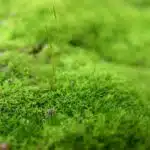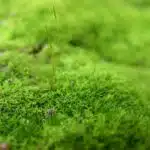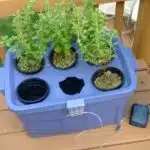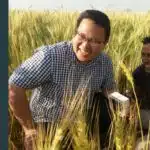Peat moss is a natural resource commonly used in gardening and horticulture. It has been a popular ingredient in soil mixes for decades due to its unique properties that enhance plant growth. This organic material is composed of partially decomposed sphagnum moss, a type of bog plant found in wetlands.
Peat moss is highly valued for its ability to retain water and nutrients, making it an ideal addition to soils that lack moisture or have poor drainage. It also has low levels of pH, which helps to acidify alkaline soils, making them more suitable for plants that prefer acidic conditions. In addition, peat moss acts as a natural cushioning agent, protecting delicate roots from damage caused by harsh environmental conditions such as wind or drought. Its versatility and multiple benefits make it a valuable resource for gardeners and horticulturists alike.
What Is Peat Moss?
Peat moss is a type of organic material that is harvested from bogs and wetland areas. It is often used by gardeners and horticulturists as a soil amendment due to its many benefits. Peat moss has a unique texture that resembles that of a sponge, making it able to hold large amounts of water while remaining light and fluffy.
The harvesting process of peat moss is an interesting one. It begins with the identification of suitable bog areas which have been formed over hundreds or thousands of years through the accumulation of dead plant material. The top layer of vegetation is removed using specialized equipment, revealing the underlying peat layer. This layer is then cut and removed in sections, leaving behind small pools of water which can be used to support local wildlife.
Peat moss has many benefits when used in gardens and potted plants. Its ability to retain moisture helps plants maintain proper hydration levels, while also improving soil aeration and drainage. Additionally, peat moss contains organic matter which slowly breaks down over time, providing essential nutrients for plant growth. In the next section, we will discuss the composition of peat moss in more detail and how it contributes to its usefulness as a soil amendment.
The Composition Of Peat Moss
Peat moss is a natural product that forms in bogs and other wetland areas. It is composed of partially decomposed plant material, mostly sphagnum moss, that has accumulated over thousands of years. The acidic and waterlogged environment of bogs slows the decomposition process, leading to the formation of peat moss.
The chemical properties of peat moss make it an ideal addition to garden soil or potting mixes. Peat moss is highly absorbent and can retain up to 20 times its weight in water. It also has a low pH level, making it ideal for acid-loving plants such as blueberries, azaleas, and rhododendrons. Additionally, peat moss has a high cation exchange capacity (CEC), which means it can hold onto nutrients and release them slowly over time.
Peat moss decomposition is a slow process that takes place over centuries. As organic matter accumulates in the bog, it undergoes partial decomposition due to the anaerobic conditions present in the waterlogged environment. This results in the accumulation of partially decomposed plant material known as peat moss. Over time, layers of peat build up until they form a thick layer on top of the bog surface.
Transition: Understanding the composition and chemical properties of peat moss is crucial for gardeners who want to maximize their plant growth potential. However, it’s also important to know about the history of this versatile substance in gardening practices.
The History Of Peat Moss In Gardening
Peat moss is a type of organic matter found in acidic bogs and mires, which has been used as a soil amendment in gardening for centuries. Its origins can be traced back to the ancient civilizations of Europe and the Middle East. Peat moss is used in gardens and potted plants to help improve soil structure, increase moisture retention and reduce erosion. It also contains natural plant growth hormones, which can help improve seed germination and root growth.
Peat Moss Origins
Peat moss is a type of organic matter that is commonly used in gardening and potted plants. It is a product of peat bogs, which are formed over thousands of years as dead plant material accumulates and decomposes in waterlogged areas. Peat moss harvesting involves the removal of the top layer of peat from these bogs, which can be up to 20 feet deep. The peat is then processed and packaged for use in horticulture.
The use of peat moss in gardening dates back to the early 1900s, when it was discovered that it had excellent water-holding properties that made it ideal for use in potting mixes. Over time, its popularity grew as gardeners realized that it also provides good aeration and drainage, making it an excellent choice for all types of plants. However, despite its many benefits, there have been concerns about the environmental impact of peat moss harvesting, particularly on fragile ecosystems such as wetlands.
While some argue that peat moss harvesting should be banned altogether due to its negative impact on the environment, others believe that sustainable harvesting practices can minimize this impact. For example, some companies are now using vacuum harvesters instead of traditional digging methods to reduce damage to the surrounding landscape. Additionally, efforts are being made to restore damaged peatlands and promote alternative materials for horticultural use. As gardeners become more aware of these issues, they are increasingly seeking out eco-friendly alternatives to traditional peat-based products.
Peat Moss Uses In Gardening
Peat moss has been an integral part of gardening for over a century due to its excellent water-holding, drainage, and aeration properties. Gardeners have used it in various ways, including as a soil amendment, potting mix component, and composting material. Composting with peat moss has become increasingly popular as it helps improve the quality of the soil by providing essential nutrients and enhancing water retention.
Moreover, peat moss has also found its way into hydroponic gardening systems. It is commonly used as a growing medium in hydroponics because it provides excellent water retention and allows for proper air circulation around plant roots. Peat moss is lightweight and easy to handle, making it an ideal choice for small-scale indoor gardens.
Despite its many uses in gardening, there have been concerns about the environmental impact of peat moss harvesting. As a result, gardeners are exploring alternatives to traditional peat-based products and promoting sustainable harvesting practices. While there may be some challenges associated with transitioning away from peat-based products entirely, efforts are being made to develop eco-friendly alternatives that can provide similar benefits without damaging fragile ecosystems.
How Peat Moss Enhances Plant Growth
Peat moss is a highly sought-after material in horticulture due to its numerous benefits. In fact, it is estimated that peat moss accounts for over 60% of the growing media used in the greenhouse and nursery industries. One of the reasons why peat moss is so popular is because it has excellent water-holding capacity, which makes it ideal for use in potted plants and container gardens.
When peat moss is added to soil, it helps to improve drainage and aeration, which are vital for healthy plant growth. Peat moss also provides an ideal environment for beneficial microorganisms that help to break down organic matter and release nutrients into the soil. Additionally, peat moss contains a range of micronutrients that are essential for plant growth, such as iron, copper, and manganese.
When applying peat moss to your garden or potted plants, there are several techniques you can use to maximize its benefits. For example, you can mix peat moss with other materials such as compost or vermiculite to create a customized growing medium. You can also use peat moss as a top dressing around existing plants to help retain moisture and suppress weeds. Alternatively, you can add peat moss to planting holes when transplanting seedlings or young plants to provide them with extra nutrients and support their growth.
In the subsequent section, we will explore the many benefits of using peat moss in gardening. By understanding how this versatile material can enhance plant growth and health, you’ll be better equipped to create thriving gardens and beautiful indoor landscapes that will bring joy and beauty into your life.
The Benefits Of Using Peat Moss In Gardening
Benefits of Using Peat Moss in Gardening
Peat moss is a natural, organic material that has numerous benefits when used in gardening. One of the main advantages of peat moss is that it can improve soil structure and texture, which ultimately leads to better plant growth. As peat moss is highly absorbent, it helps retain moisture in the soil, making it an ideal choice for potted plants and gardens in dry climates.
Moreover, peat moss has a slightly acidic pH level that makes it an excellent addition to soils that are alkaline. The acidic nature of peat moss can help balance out the pH levels and create an environment where plants can thrive. Additionally, peat moss contains essential nutrients such as nitrogen, potassium, and phosphorus that are necessary for plant growth.
Comparisons between various types of soil amendments have revealed that peat moss is one of the most effective choices available. While there are other options such as compost or vermiculite, they may not provide the same level of benefits as peat moss. In comparison to these alternatives, peat moss has a higher water-holding capacity and can enhance soil porosity while promoting healthy root development.
Choosing the right type of peat moss depends on several factors such as the intended use and plant species being grown. In the next section we will go over some tips on how to select the appropriate type of peat moss for your specific gardening needs.
How To Choose The Right Type Of Peat Moss
Imagine a baker, trying to choose the perfect ingredient for their cake. They have many options, but they know that the right choice can make all the difference in the end result. In a similar way, choosing the right type of peat moss is crucial for gardeners and potted plant enthusiasts. With so many different types of peat available on the market, it can be challenging to know which one is best suited for your needs.
When choosing peat alternatives, it’s essential to consider what you are looking to achieve with your plants. While traditional peat moss has been a go-to option for years due to its water retention abilities and pH balance, there are now several other organic materials on the market that offer similar benefits while being more environmentally friendly. Coir fiber, bark fines, and composted rice hulls are just a few examples of sustainable and effective alternatives.
Comparing different types of peat moss can be overwhelming at first glance. However, by paying attention to factors such as moisture retention capacity, acidity level, and texture, you can quickly narrow down your options. Sphagnum peat moss is known for its excellent water retention and neutral pH level, making it ideal for seedlings and sensitive plants. Meanwhile, coir fiber is great for plants that require good drainage due to its fibrous texture.
With so many options available today, it’s essential to do your research when choosing the right type of peat moss. By considering what you want to achieve with your plants and comparing different types based on specific factors such as moisture retention capacity and texture, you can find an organic material that suits your gardening needs perfectly. In the subsequent section about ‘the different forms of peat moss,’ we will delve deeper into how these various types differ from each other and how they can best serve your gardening purposes.
The Different Forms Of Peat Moss
Peat moss is a popular gardening material that comes in different forms. One of the most common forms is sphagnum peat moss, which has been used for centuries due to its water-holding capacity and ability to improve soil structure. Benefits of sphagnum peat moss include its ability to retain moisture, provide aeration and drainage, as well as increase soil acidity. It is also a renewable resource that can be harvested sustainably.
Another form of peat moss is reed-sedge peat, which is extracted from wetlands with high concentrations of sedges and reeds. This type of peat has a lower water-holding capacity but can still improve soil structure and promote root development. It is often mixed with sphagnum peat to create a more balanced growing medium.
To ensure sustainable harvesting practices, regulations have been put in place in some countries where peat moss extraction occurs on a large scale. These regulations aim to protect wetland ecosystems and minimize the impact of harvesting on biodiversity, water quality, and carbon storage. Some examples of these regulations include limiting the amount of peat that can be harvested per year or requiring restoration plans after harvest.
Overall, choosing the right form of peat moss for your garden depends on your specific needs and preferences. In the next section, we will explore how to use peat moss effectively in gardens and potted plants to take advantage of its many benefits while minimizing any potential negative impacts on the environment.
How To Use Peat Moss In Gardens
Peat moss is a natural resource that has become popular in the gardening industry. It is formed from the decomposition of sphagnum moss and other organic materials over hundreds of years, resulting in a nutrient-rich substance that can help improve soil quality. Peat moss comes in different forms such as loose, compressed, or dehydrated.
The benefits of composting cannot be overstated when it comes to using peat moss in gardens. Composting helps create an environment where beneficial microorganisms thrive, which enhances the health of plants by providing essential nutrients to the soil. Types of mulch such as wood chips, straw or leaves can also be added to aid with moisture retention and weed control.
Using peat moss in container gardening can provide numerous benefits for potted plants. Peat moss helps retain moisture within the soil, which is crucial for plant growth and development. It also provides excellent drainage for excess water to prevent root rot. When mixed with other potting soils like perlite or vermiculite, peat moss creates a perfect growing medium that allows air movement and nutrients to reach plant roots easily.
Incorporating peat moss into your garden or potted plants can have significant benefits on the overall health and growth of your vegetation. Whether you’re looking to improve soil quality or create an ideal growing medium for your potted plants, peat moss should definitely be considered as it’s readily available at most garden stores and nurseries.
Using Peat Moss In Container Gardening
Peat moss is a popular soil amendment used in container gardening. It is known for its ability to retain moisture, improve soil aeration and drainage, and provide nutrients to plants. In container gardening, where the roots of plants are confined to a small space, peat moss can help ensure healthy growth.
One way to use peat moss in container gardening is by mixing it with potting soil. The recommended ratio is one part peat moss to two parts potting soil. This will create a light and fluffy mixture that provides good drainage and plenty of air pockets for plant roots. Peat moss can also be used as a top dressing for potted plants. This helps prevent evaporation and keeps the soil moist for longer periods.
Another benefit of using peat moss in container gardening is that it can reduce the frequency of watering needed for plants. Its high water-holding capacity means that it can hold up to 20 times its weight in water, which means less watering is necessary. Additionally, peat moss has a slightly acidic pH level, which makes it ideal for acid-loving plants such as blueberries and azaleas.
Transitioning into the next section: However, while peat moss has many benefits for container gardening, its harvesting can have negative environmental impacts. Let’s take a closer look at these impacts and explore alternative options for sustainable soil amendments.”
The Environmental Impact Of Peat Moss Harvesting
Peat moss is a commonly used organic material in gardening and potted plants. However, its harvesting has become a topic of concern due to its environmental impact. Peat bogs are an important part of the ecosystem, providing habitat for unique flora and fauna species. Harvesting peat moss from these bogs can lead to soil erosion, loss of biodiversity, and carbon emissions.
The environmental impact of peat moss harvesting has led to the development of sustainability practices in the horticultural industry. These practices aim to reduce the negative impact of peat moss extraction by implementing alternative materials or reducing its use altogether. Some alternatives include coconut coir, composted bark, and recycled green waste. These materials have proven to be more sustainable options as they are renewable, readily available, and do not harm fragile ecosystems.
Sustainability practices in horticulture also involve educating consumers about the negative impacts of peat moss harvesting on the environment. By making informed decisions when purchasing gardening products, individuals can contribute to reducing the demand for peat moss and encourage businesses to adopt more sustainable practices. It is important that we take action now to protect our planet’s natural resources for future generations by choosing sustainable alternatives over harmful products like peat moss.
Transition: While there are many alternatives available for peat moss in gardening and potted plants, it is essential to understand their benefits and drawbacks before taking any step towards adopting them.
Alternatives To Peat Moss In Gardening
Despite its popularity among gardeners and growers, the environmental impact of peat moss harvesting cannot be ignored. As a result, sustainable alternatives to peat moss are being explored and developed to reduce our reliance on this natural resource. These alternatives not only help in preserving the environment but also provide cost-effective substitutes for gardeners.
One such alternative is coir, which is made from coconut husks. Coir is an excellent substitute for peat moss as it has similar properties that make it an excellent soil conditioner. It retains moisture well, improves aeration and drainage, and has a neutral pH value. Moreover, coir is readily available and affordable, making it an ideal choice for gardeners looking for sustainable alternatives.
Another suitable substitute for peat moss is composted bark. Composted bark helps improve soil structure by improving aeration and water retention while also adding essential nutrients to the soil. Additionally, using composted bark diverts waste from landfills and provides an eco-friendly solution for gardeners who want to reduce their carbon footprint.
In conclusion, using sustainable alternatives to peat moss can help preserve our environment while providing cost-effective substitutes for gardeners. Coir and composted bark are just two of many options available that offer similar benefits to peat moss without the negative effects on our planet. However, common mistakes when using these substitutes can still occur if proper care is not taken during application.
Common Mistakes When Using Peat Moss
Although peat moss is a popular soil amendment, improper application can lead to problems in your garden. One common mistake made when using peat moss is applying too much. A little bit of peat moss goes a long way, so it’s important to use it sparingly. Overuse of peat moss can cause soil compaction and hinder the growth of roots.
Another common mistake is failing to properly mix the peat moss with other components of your soil. Peat moss should be mixed thoroughly with other materials to ensure even distribution throughout the soil. This will help prevent nutrient deficiencies and promote healthy plant growth.
Finally, not moistening peat moss before use is another mistake many gardeners make. Peat moss is highly absorbent and will draw moisture away from the plants if it’s not pre-moistened. Properly moistening peat moss before use will help ensure that it doesn’t dry out and negatively impact plant growth.
By avoiding these common mistakes and using peat moss properly, you can reap the benefits this organic material has to offer in promoting healthy plant growth.
Transition into subsequent section: Now that we’ve covered some common mistakes when using peat moss, let’s move on to discussing proper techniques for storing and handling this valuable soil amendment.
Storing And Handling Peat Moss
Common mistakes when using peat moss can lead to negative effects on plants and soil. It is important to properly handle and store peat moss to prevent these mistakes. Handling peat moss involves taking precautions to avoid inhaling the dust that can cause respiratory irritation. It is also important to keep it moist and avoid letting it dry out.
Peat moss storage solutions are essential in preserving its quality. When storing, it should be kept in a cool and dry place away from direct sunlight. A sealed container or bag can maintain its moisture content and prevent it from drying out. If peat moss does become too dry, adding water will not restore its quality, so proper storage is crucial.
Understanding how to handle and store peat moss can improve plant growth outcomes. With this knowledge, gardeners and horticulturalists alike can ensure that their plants receive the best possible care while reducing environmental impacts. The next section will explore how incorporating peat moss into fertilization practices can further enhance plant growth potential.
Peat Moss And Fertilization
Fertilizing peat moss is an important aspect of gardening that cannot be overlooked. Peat moss is a common material used in gardens and potted plants due to its ability to retain water, improve soil structure, and promote root growth. However, it is also low in essential nutrients required for plant growth. Therefore, it is necessary to fertilize peat moss to provide the necessary nutrients for plants.
There are different types of fertilizers available in the market that can be used with peat moss. Organic fertilizers like compost or manure are often recommended as they not only provide nutrients but also improve soil health. Inorganic fertilizers like nitrogen, phosphorus, and potassium are also effective but should be used cautiously as they can harm the environment if overused.
Peat moss sustainability has become a concern in recent years due to the negative impact on the environment caused by harvesting peat bogs. As an alternative, gardeners can use coconut coir or composted bark as a sustainable substitute for peat moss. These materials offer similar benefits to peat moss and are readily available in most garden stores.
Tips for using peat moss in your garden will vary depending on the specific needs of your plants and soil type. However, it is generally recommended to mix peat moss with other organic matter like compost or manure before adding it to your garden bed or potted plants. This will help create a balanced growing medium that provides adequate drainage and nutrient retention for healthy plant growth.
Tips For Using Peat Moss In Your Garden
Peat moss is a type of organic material that is commonly used in gardening and potted plants. It is made up of partially decomposed plant matter, such as sphagnum moss, and is known for its ability to retain moisture and nutrients in soil. Peat moss has a slightly acidic pH level, which makes it ideal for growing acid-loving plants like blueberries and rhododendrons.
Despite its popularity in gardening, there are some concerns about the sustainability of peat moss. Peat bogs, where peat moss is harvested from, are an important ecosystem that supports many plant and animal species. The removal of peat moss can disrupt this delicate balance and cause irreversible damage to the environment. As a result, gardeners are encouraged to use peat moss alternatives such as coconut coir or composted bark.
Another important consideration when using peat moss in soil is its effect on soil pH levels. Since peat moss has an acidic nature, it can lower the overall pH level of soil over time. This can pose a problem for plants that prefer neutral or alkaline soil conditions. To avoid this issue, gardeners should test their soil regularly and add amendments like lime to adjust the pH level accordingly.
Overall, while peat moss has its benefits in gardening and potted plants, it’s important to consider alternative options due to sustainability concerns. Additionally, gardeners should be mindful of the impact of peat moss on their soil’s pH levels and take steps to adjust accordingly. By doing so, we can ensure healthy plant growth while also preserving our environment.
Conclusion
Peat moss is a common material used in gardening and potted plants due to its unique properties that enhance plant growth. It is a fibrous, spongy, and dark brown organic matter formed from decomposed plant material in peat bogs. Peat moss has been used in horticulture for centuries because of its ability to retain water, increase soil acidity, and improve soil structure.
The benefits of using peat moss in gardening are numerous. It can improve soil aeration, drainage, and nutrient retention leading to increased plant growth and yield. Additionally, it acts as a natural insect repellent and prevents weed growth. However, it is important to note that improper use of peat moss can negatively impact the environment by contributing to carbon emissions from peat bog depletion.
A hypothetical example of the importance of proper use of peat moss is a gardener who relies heavily on it without realizing the environmental consequences. Over time, their frequent use leads to significant depletion of peat bogs resulting in loss of wildlife habitat and increased carbon emissions that contribute to climate change. As gardeners, we have the responsibility to use resources sustainably while still reaping the benefits they provide. Proper handling and storage of peat moss along with mindful usage can help ensure its continued availability for future generations.
Image Credits
- “John Kivits carries on a craft that has been in his family for generations…….cutting peat. 1980 Chat Moss” by Irlam,Cadishead,Rixton with Glazebrook old photos (featured)

